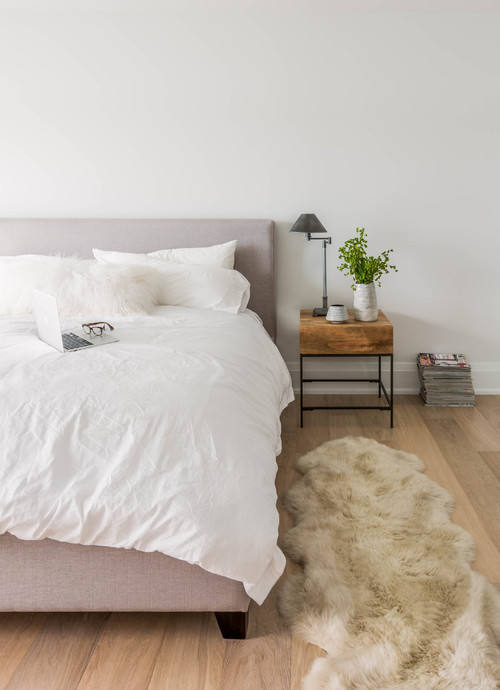Category Archives: Bed Nuts & Bolts
Bed Nuts & Bolts: How To Avoid Body Impressions in Your Mattress
Post by Jessica Schoenenberger.
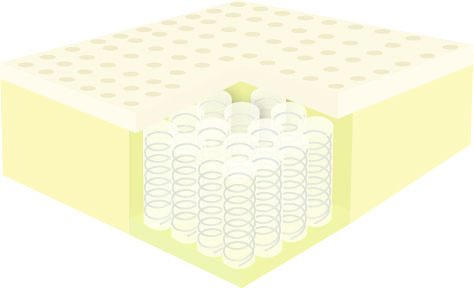 You did a lot of research and paid a lot of money to get the mattress of your dreams. The materials inside your mattress and how its constructed will determine how your mattress holds up. Innerspring mattresses with tempered steel coils will give you better, longer lasting support than layers of all foam. Materials like latex on top of individually pocketed innersprings, will retain better loft and show less body impressions than memory or polyurethane foams. So, try this simple program to avoid those dips and valleys.
You did a lot of research and paid a lot of money to get the mattress of your dreams. The materials inside your mattress and how its constructed will determine how your mattress holds up. Innerspring mattresses with tempered steel coils will give you better, longer lasting support than layers of all foam. Materials like latex on top of individually pocketed innersprings, will retain better loft and show less body impressions than memory or polyurethane foams. So, try this simple program to avoid those dips and valleys.
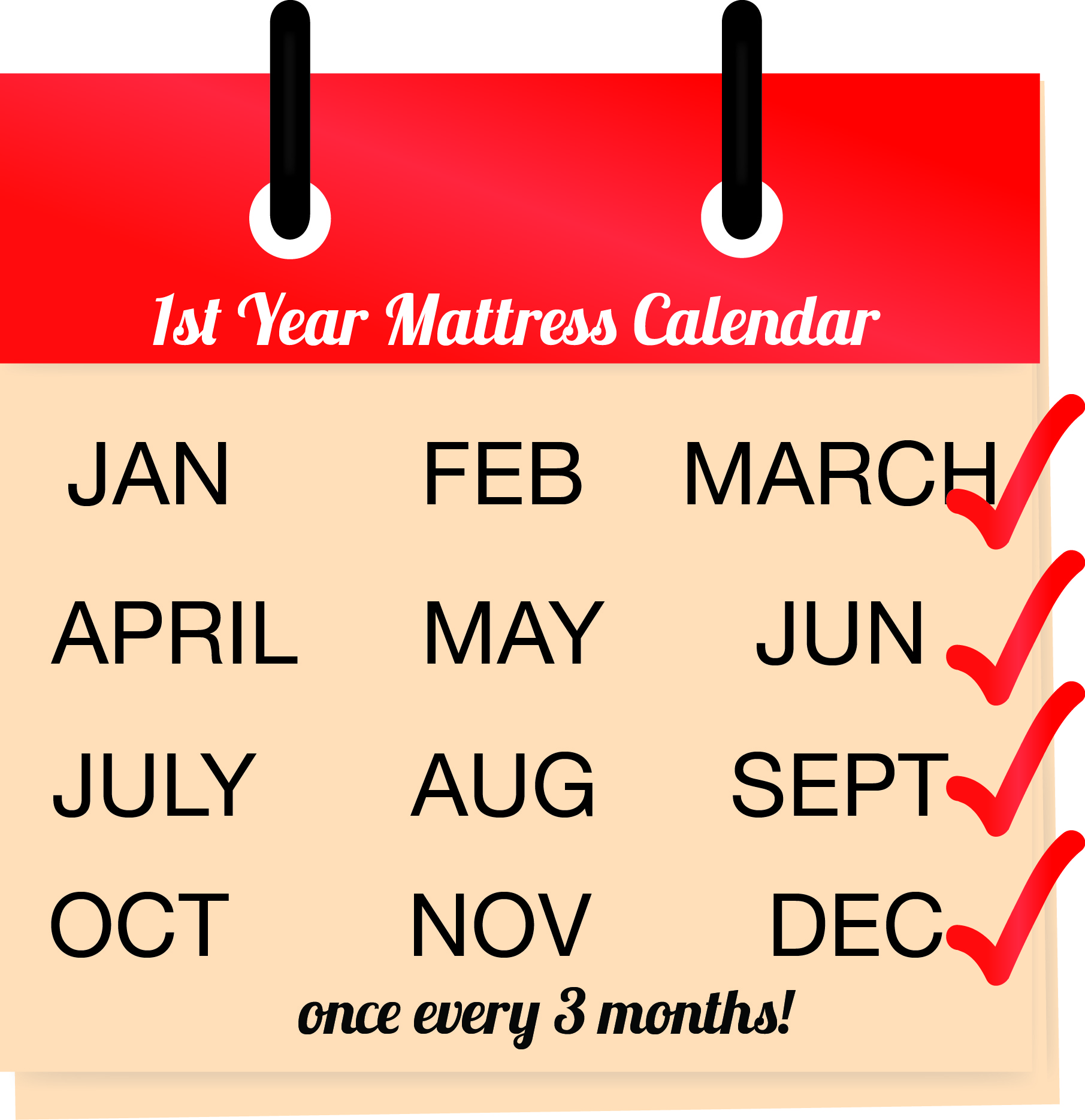
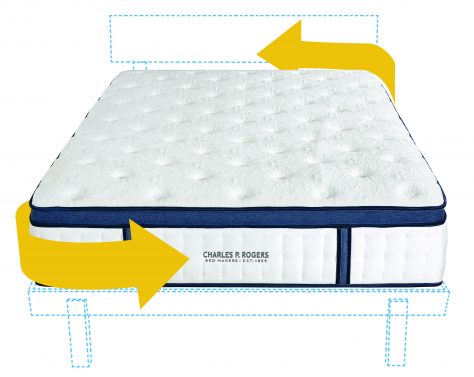
 Research shows it takes 30-60 days for you to get use to your new mattress and for it to get use to you. The chore of flipping your mattress is no longer necessary. You can improve long range performance by rotating your new mattress every quarter for the first year, then once every six months. A rotation is 1 turn of the mattress, putting the head at the foot and the foot at the head of the bed. The reason is physics; most couples are different weight, height and shapes, yet we tend to sleep in the same spot, in the same position(s) night after night. By rotating your mattress you sleep on different sides without actually having to change sides. Once a year its advised to also rotate your foundation or boxspring head to foot. A King or Cal King Set comes with 1 mattress and 2 foundations, you should switch the foundations from one side to the other and rotate each head to foot. Same goes for Split Queen foundations.
Research shows it takes 30-60 days for you to get use to your new mattress and for it to get use to you. The chore of flipping your mattress is no longer necessary. You can improve long range performance by rotating your new mattress every quarter for the first year, then once every six months. A rotation is 1 turn of the mattress, putting the head at the foot and the foot at the head of the bed. The reason is physics; most couples are different weight, height and shapes, yet we tend to sleep in the same spot, in the same position(s) night after night. By rotating your mattress you sleep on different sides without actually having to change sides. Once a year its advised to also rotate your foundation or boxspring head to foot. A King or Cal King Set comes with 1 mattress and 2 foundations, you should switch the foundations from one side to the other and rotate each head to foot. Same goes for Split Queen foundations.
A simple rotation schedule will even out wear & tear and help you get use to your new mattress more quickly. While all mattresses naturally soften over time and with use, by rotating your mattress and foundations you will get many more years of sleeping well.

Bed Nuts & Bolts: How to Choose a Mattress
Post by Tracy Kaler.
A mattress is a major purchase, and not just for financial reasons, but also because you’ll sleep on the bed you purchase for years to come. For this reason alone, it’s crucial to have your ducks in a row before you go mattress shopping. Heed these tips to make the decision an easier one.
Know your budget from the start.
Like other home furnishings, mattress prices run the gamut. Know your budget before you begin, and stick to it to avoid buyer’s remorse later on.
Research mattresses before you shop.
Learn as much as you can about mattresses before you hit the stores. Pillow top? Firm? Soft? Know what you need in advance, and you’re less likely to stress when buying.
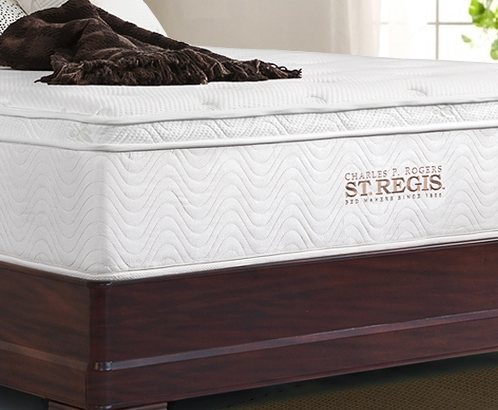
Shop the right retailers.
Don’t be afraid to ask for recommendations. Chat with friends and family and ask about their mattresses. Do they like what they sleep on? Would they purchase again? Selecting the right stores could help you make your decision faster.
Ask the salesperson questions.
Make a list of questions before you get to the store. Get as much information as possible about the mattress including warranty and reviews. Ask what other people are saying about a mattress you’re considering, or take the time and Google the model before you make a purchase. You can always return to the store the next day and finalize the purchase then if needed.
If your salesperson isn’t knowledgeable, ask for another, or move on to the next retailer.
Test any mattress you’re considering.
Narrow down the candidates to three or four, and spend at least 15 minutes on each mattress. Try different positions and see how you feel. Trust your gut when you buy.
Get details on the return policy.
Before you pull out your credit card, ask about the return policy. You might get the mattress home and sleep on it for a few nights, only to discover that it’s not the right model. You’ll want to return it and get a refund, or at least a full merchandise credit for another mattress.

Have a you purchased a mattress lately? How did you make your decision?
Best Bedding: Down or Synthetic?
Post by Tracy Kaler.
Down pillows provide restful sleep for some, but for others, snoozing on down can provoke allergic reactions and even cause insomnia. Before you begin shopping for bedding, you’ll want to be sure that down will help you get a good night’s sleep.
Even a low percentage of down can bring on an allergy attack. As an allergy sufferer myself, I learned that my allergies improve when I sleep on a synthetic pillow. If you like the feel of down, it’s fairly easy to find non-down pillows with a down-feather feel. Granted, any bed accoutrement lacking actual feathers won’t mimic the sumptuousness of down, but rather, be a suitable substitute, and usually provide enough comfort for a sound sleep.
Down pillows can attract dust mites, which is another allergen and asthma irritant, found in bedding and households in general. If you suffer from allergies or asthma, you might consider synthetic pillows and bedding. Typically, synthetics are covered in materials that resist dust mites and allergens and come free of dyes. Most often, the maintenance of synthetic bedding is easier and doesn’t require professional cleaning, but can be laundered at home instead.
Down can also be a breeding ground for mold and mildew under the right conditions, so that’s something else to consider when choosing feather vs. synthetic bedding. Do you live in an unusually moist environment? If so, synthetic might be the way to go.
If you choose to go with synthetics, you can find any size hypoallergenic pillow and comforter. While you’re at it, select hypoallergenic mattress cover and sheets too.
If you’re certain you and your family are allergy-free, and you can’t resist the feel of real down, then by all means, envelope your bed with down and sink into your feather-filled cocoon every night. Otherwise, you’re probably better off with hypoallergenic bed clothes for a healthier bedroom, not to mention night after night of restful sleep.
Keep Your Money Under Your Mattress: Charles P. Rogers Introduces New ‘Storage Bed’
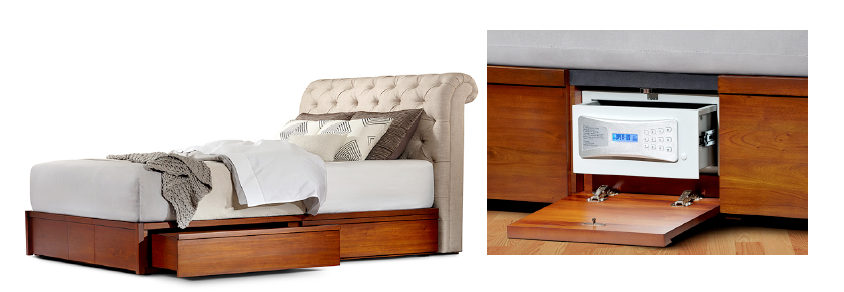
Post by Tracy Kaler.
You can never have too much storage. With the latest creation from Charles P. Rogers, you can store your valuables (or everyday items) and keep your bedroom virtually clutter-free. Launched in June 2015, this clever yet lovely bed includes an optional digital safe drawer –– a practical and almost hidden place to store your most prized possessions.
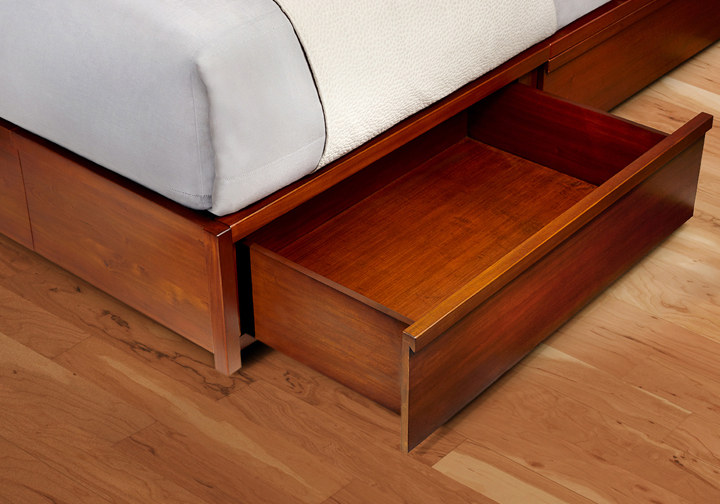
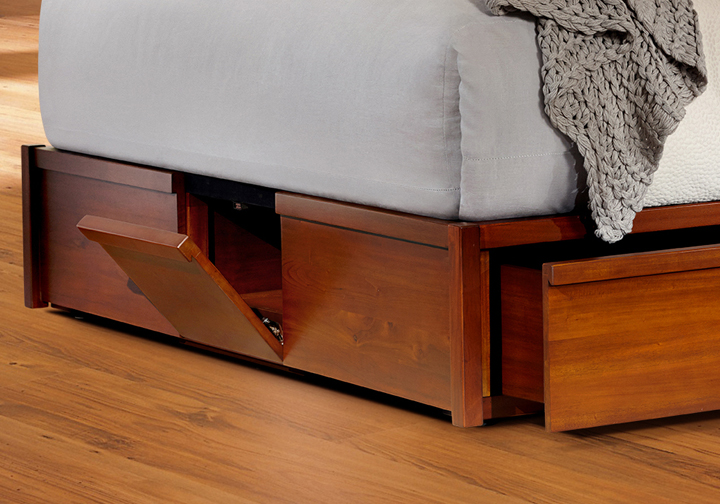
Handmade in the Charles P. Rogers workroom in New York City, the bed features dovetail joinery with full extension, soft-closing drawer slides. What’s more, the company’s signature upholstered and padded decks provide outstanding support as well as a non-skid surface.
Built-in and multi-purpose furniture remain a solid choice for bedrooms of all styles and sizes, and even more so in compact spaces, which often benefit from space-saving designs. Plus, adding drawers to a bed increases storage space beyond the traditional dresser.
Offered in a sleek platform style or with a variety of headboard options, the Storage Bed comes in a microsuede upholstery if you prefer a softer look, or a mahogany finish if you fancy a more masculine aesthetic.
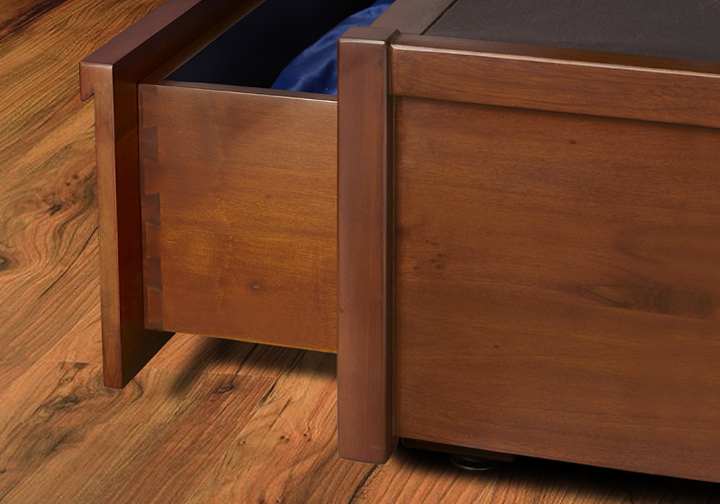
Constructed from sustainably-produced materials such as plantation-grown mahogany, recycled steel, and marine plywood, the Platform Bed is available in twin, full, queen, and king sizes. I might add that you’ll never have to worry about vacuuming those dust bunnies under your bed again. Less cleaning? That’s a bonus.
For more info about the latest from Charles P. Rogers, visit the website.
Bed Heights: How High Should You Go?
Post by Tracy Kaler.
Beds come in a variety of heights, but most fall in the range of 18-25 inches from the floor to the top of the mattress. Formal, more traditional beds tend be higher while antique beds can come as high as 36 inches, and perhaps a little higher once you add bedding.
You can decide on the height that works for you, and that’s often based on design style, comfort, ease of getting in and out of the bed, etc. You also might think about how much storage you need under your bed, and this will help determine the bed you choose, so you’re sure to make the most out of that space between the bottom of the box spring and the floor.
More and more mattresses run thicker today, especially with pillow top options, so the standard heights of beds have increased over the years. Many people like that soft cocoon-like feeling they get from a pillow-top mattress. One option with a thicker mattress is to purchase a platform bed, which sits closer to the floor; hence you will get a lower bed. Bear in mind, you won’t require a box spring with a platform bed.
Elderly folks will probably feel more at ease with a bed height that’s more in the 24-inch range –– since they’ll be able to get in and out easier –– and should aim for a design in which their feet touch the floor when sitting on the bed. Lower beds are usually easier for children to crawl in and out of, once they graduate from their crib.
Whatever bed frame and mattress you choose, consider the overall height and what will feel most natural for you when you’re at rest, sitting, and getting in and out of bed.



